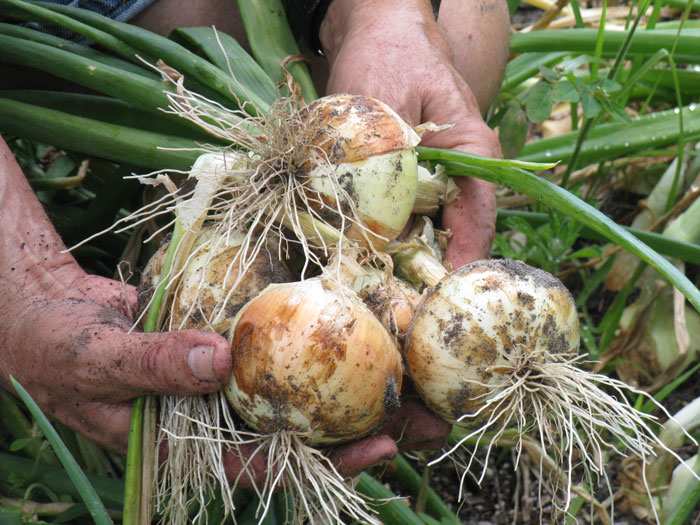Most of us use onions in some form. You may fry them to add to meat dishes, cut them into salads, or use them as a topping for pizzas. Some eat them as springers and whole onions too. Think how many onions you have been buying that could be grown in your yard.
One quick way to plant the fall onion crop is with transplants available at some garden centers. These are Florida varieties that have been started from seed and now are ready to add to the garden. Set the transplants so the tops of the basal portions are about an inch deep and space them 2- to 3-inches apart as seen in this recent planting in the above garden picture.
Onion sets that look like little onions are also available to produce fresh scallions to harvest from the garden. You could be pulling these in about a month but they do not form the really big bulbs.
Many gardeners like to grow their onions from seed available at garden centers. Start this crop by obtaining the right variety if you want to grow the big ones. Florida is a bit different and our onions begin bulbing under short days of February or March. They then mature their big bulbs by May. Some good varieties to look for are Granex, Grano and Pumba. Each can produce good size onions but it takes about 180 days.
You could direct sow the onion seeds in the garden but it's probably best to start them somewhere else in a tray of a potting soil. They only need an inch or two of soil to produce the transplants. Scatter the seeds and cover them lightly. Keep in a sunny site and moist. Feed every other week with a half strength water-soluble fertilizer solution. The transplants should be ready for the garden in about 6 weeks.
Provide onions with a sunny garden site. Some have done well with a little shade but full sun is best. Loosen the soil and remove the weeds and you are ready to plant. Some gardeners like to add organic matter and manure. This can help with the onion plant care but sands grow good onions too.
Add the transplants by spacing them 2- to 3-inches apart. As they start to grow, you can harvest some as they become congested to eat fresh. Keep the soil moist and feed every 3 to 4 weeks with a general garden fertilizer made for vegetables.
Onions won't mind the winter weather and should start to form bulbs in late February or early March. When the tops decline they are ready to dig, Clean the onions of soil and let them air-dry in a shady spot for a few days. Then put them under home conditions to store until needed.

